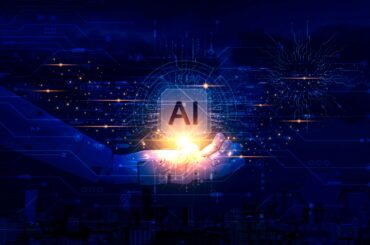
Increasingly, tools powered by artificial intelligence are helping organizations navigate some of the more challenging aspects of M&A activities.
Over the past several years, artificial intelligence has become a dominant force in the business world. Not only is AI driving innovation across different products and technologies, but it’s also shaping the way common business activities and transactions are taking place.
With mergers and acquisitions, for example, AI has helped alleviate common challenges and pain points within a clunky, cumbersome process. Artificial intelligence can play a role in streamlining every stage of the M&A journey, serving as a useful resource for evaluating companies—especially those in the technology sector—and ensuring all phases of the transaction are optimized.
“Developments in generative AI and expanding machine learning capabilities are making this an interesting time for mergers and acquisitions,” said Kevin Knoepp, operating partner and CTO at Trilogy Search Partners. “Now more than ever, companies have the opportunity to modernize aspects of the tedious and sometimes grueling M&A process, allowing them to better assess the potential risk of deals, identify and evaluate overlooked targets, and once a deal is in progress, better organize and manage deal rooms. With these generative AI-driven capabilities, companies can improve the diligence process for businesses they are interested in acquiring, making the overall M&A process less risky, quicker, and more efficient. However, although generative AI is evolving fast, it still needs to be managed carefully, and all output must be analyzed and verified by qualified experts in each applicable field.”
Creating Ease During the Evaluation Phase
One of the stickiest issues with any merger or acquisition in the tech space is evaluating a company’s software. This step is essential at the start of a transaction, but human analysts are often faced with a mountain of data to review and parse. That’s where AI-driven resources can help. Machine learning algorithms are capable of culling through data rapidly, making it easier to cover critical components of an initial evaluation, such as:
- Source code review and quality assessment: Companies can leverage AI tools to detect bugs, security risks, or other areas where code should be updated to align with best practices.
- Evaluating software performance: Using AI, an organization can evaluate the software’s speed, reliability, and resource consumption. Tech leads can leverage machine learning models to gauge how the software would behave under various conditions.
- Testing usability: Understanding weak points of software is made much easier with AI, which can analyze user data to find areas where users commonly experience issues or where the user experience could be improved. Further, inputting the data into machine learning models would allow IT teams to get a sense of future user satisfaction and churn rates.
- Determining maintenance and scalability: AI can be used to preview the software’s maintenance needs or see what scaling the software might look like. IT leaders could also use artificial intelligence to gauge how well the software could accommodate new data or shifts in the operating environment.
Combined with a market analysis, IT teams can use AI to generate an accurate estimate of the software’s value. It’s also a useful resource to gain a deeper understanding of a company’s products—a process that would normally be prohibitively time-intensive. Beyond the initial evaluation phase, AI tools can provide a range of benefits during the merger or acquisition itself.
Enabling Seamless M&A Transitions
In order for mergers and acquisitions to be successful, technology infrastructure must be consolidated. The consolidation process includes a complete audit of all software and applications to understand how those tools are being used. It’s also important to uncover redundant applications or tools so that companies can streamline their tech stack.
Company technology must be evaluated against business goals for alignment—ensuring tasks like collaboration, communication, and file sharing are streamlined. Once tech assets have been assessed, companies will need to undergo a migration to consolidate resources and data.
Data migrations are thorny elements of mergers and acquisitions that require special attention to ensure information is transferred safely, securely, and completely. IT leaders conducting data migrations during a merger or acquisition will need to plan the migration carefully, establish clear goals, pinpoint potential risks, and build in contingencies to handle unexpected issues.
All of these tasks can place a heavy burden on IT resources. Leaning on AI tools can help lighten the load in a number of ways. For instance, AI can be used for routine tasks such as relocating data from one system to another—eliminating the need for manual involvement.
It can also play a role in cleaning up data and preparing it for migration. Some AI software can scan files to identify and classify the kind of information contained within, allowing IT teams to easily tell if the data should be included in the migration or not. This process can also prevent companies from storing what they shouldn’t be or mishandling sensitive files that need special treatment.
See also: How to Execute a Successful Migration During a Divestiture
Optimizing Business Activities Post-Merger
While AI can be a tremendous asset during the early stages of a merger or acquisition, companies can also leverage AI-based tools to forge a strong path forward once the transaction is complete. Since AI is capable of digesting vast datasets and uncovering trends and patterns that may have been overlooked by human eyes, companies can continue to use AI tools to uncover new opportunities to boost efficiencies.
Following a successful data migration, companies will have a more robust repository of information from which to make decisions about the organization. Companies could use an AI tool to review customer data to inform and refine marketing activities, for example, based on the combined datasets built from the merger or acquisition.
IT teams would also be able to help enterprises improve operations by reviewing internal data and uncovering trends in employee and team habits. Using AI insights, a company could inform their office renovation plan or their remote work policy based on insights based on headcount, meeting room bookings, and productivity data.
There is a wide range of opportunities for AI to help organizations make the most of their new business situation following a merger or acquisition and launch the company to a more productive and efficient future.
Powering the Future M&A Landscape
AI is radically transforming how mergers and acquisitions are conducted. With AI-powered tools, organizations can easily navigate some of the more challenging parts of these types of business activities. Gaining a clear understanding of a company’s software can be streamlined using AI resources that rapidly provide deep insights faster than IT staff would be able to.
It can also assist with smooth data migrations and limit potential risks or missteps during the process. Once a merger or acquisition is complete, IT leaders can leverage AI to prepare the company for its next phase of growth.



























